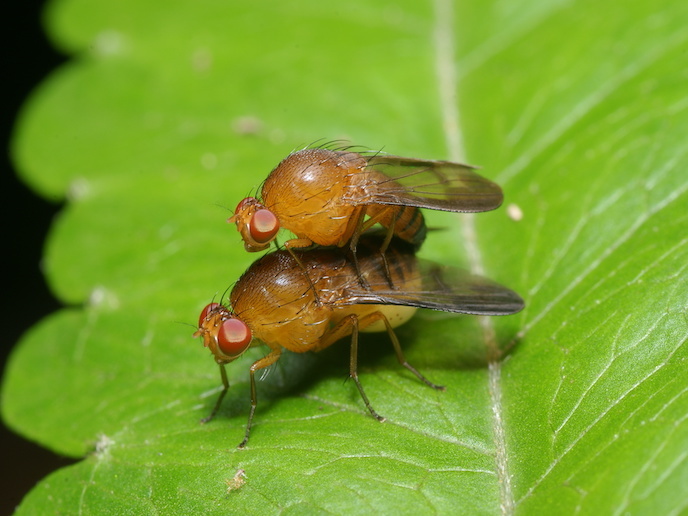The secret love life of fruit flies
How do differences in behaviour between the sexes relate to the specific ways in which our brains are wired? When it comes to humans, there is no straightforward answer to this question yet, but studying the brains of fruit flies could provide new insights. A team of researchers has been able to pinpoint hardwired differences between the brains of male and female flies, which could point to similar distinctions in other species. With around 100 000 neurons – compared to an estimated 86 billion in humans – the brain of Drosophila, the common fruit fly, is a relatively simple system. At the same time, the complex behaviours these flies display during courtship and mating make their brains important models for studying the functioning of neural circuits(opens in new window). The sexual dimorphism project, undertaken with the support of the Marie Skłodowska-Curie Actions programme(opens in new window), focused on the male fly’s pheromone to study the different responses elicited in male and female brains and the behavioural reactions they triggered.
Opposite behaviours
“The male pheromone is attractive to females and promotes mating behaviour, but it is repulsive to other males and promotes aggression,” explains Dana Shani Galili, Marie Skłodowska-Curie fellow, who led the research in this project at the MRC Laboratory of Molecular Biology(opens in new window). What happens in the flies’ brains during a close encounter? To find out, the researchers looked at the neural pathways connecting the different parts of the nervous system. They examined which role they play in processing the pheromone, which elements are differentiated between sexes, and how they regulate sexual behaviours. In both sexes, the male pheromone elicits a strong response, activating the same subset of neurons but triggering opposite behaviours. This suggests that in both sexes, these identical neurons connect with sex-specific neurons which in turn regulate their mating behaviour. The team discovered a second pathway which appears to act as a channel for decreasing the sex drive in males. In females, it enables a more fine-tuned response, where neurons in the same circuit work together to combine information on the taste and smell of surrounding stimuli. “Multisensory integration allows for a more robust read-out,” Galili notes.
Mapping the brain
The connections highlighted thanks to the project offer a new understanding of how nerve signals are processed and impact decision-making and behaviour. “The neuroanatomical map we uncovered spans from sensory neurons detecting smell, taste, touch etc., to neurons controlling motor output. We can now clearly detect sex-specific patterns of connectivity, and causally relate them to behaviour,” she says. These findings could help us explain social behaviours in other species as well. Previous research(opens in new window) found common characteristics in the neural circuits of flies and mice, which could indicate that behaviours such as mating and fighting are controlled by the brain through a common network. So what about us humans? "While the degree of connectivity differences between the brains of men and women and the potential causes and effects of these distinctions are not yet known, emerging evidence suggests that human pheromones exist and elicit a sex-specific response," Galili notes. By establishing a causal relationship between sex-specific wiring and behaviour, the findings on fruit flies could inform future research in this area.



